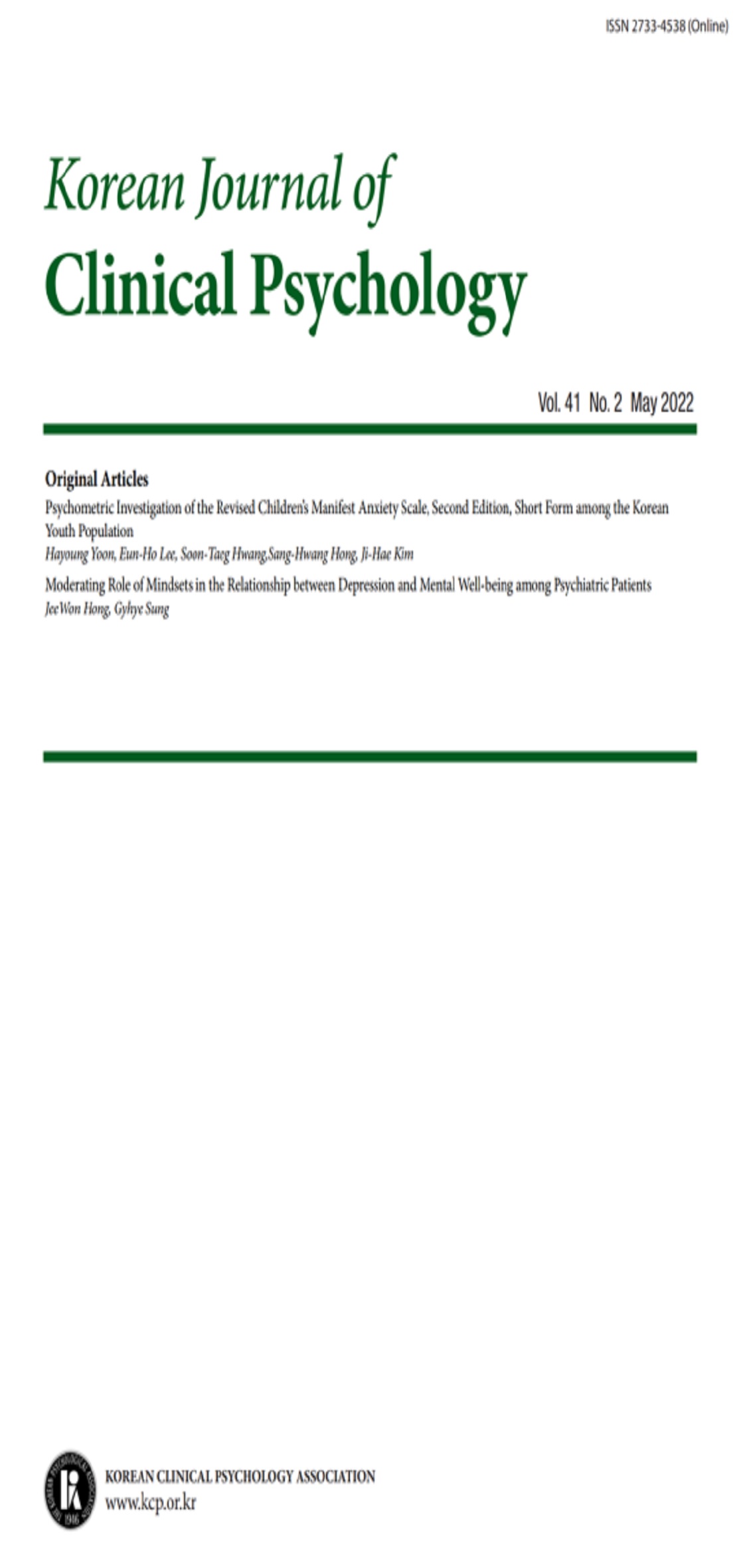open access
메뉴
open access
메뉴 E-ISSN : 2733-4538
E-ISSN : 2733-4538
본 연구에서는 주의력 결핍 과잉행동 장애 가능성이 높은 아동들과 정상 아동들의 보상 양에 대한 반응 편파 양상과 변별력 및 반응 시간을 알아보았다. 초등학교에 재학중인 9-12세 남자 아동 총 60명을 대상으로 한국형 Conners 교사용 평정 척도를 사용하여 주의력 결핍 과잉행동 장애 가능성이 높은 아동 집단 28명과 정상 아동집단 32명으로 구분하였다. 개념 구별 과제인 Wisconsin Card Sorting Test의 모양과 수 자극을 사용하여 각 집단의 절반에게는 모양에 따라 올바르게 분류했을 때와 수에 따라 올바르게 분류했을 때의 자극 보상 비율을 3:1로 주었으며 나머지 절반에게는 1:3으로 주었다. 그 결과 정상 아동들이 주의력 결핍 과잉행동 장애 아동들에 비해 더 많은 보상을 받은 자극에 대해 유의미하게 편파된 반응을 보였다. 이러한 결과는 주의력 결핍 과잉행동 장애 가능성이 높은 아동들이 정상 아동들에 비해 보상에 둔할 뿐 아니라 보상의 확률에 대한 내재화된 정보보다는 즉각적인 맥락에 따라 행동을 결정하는 경향이 있음을 시사한다. 마지막으로 본 연구의 문제점과 제안점에 대해서 논의하였다.
The present study aimed to explore the response bias pattern, discriminability, and reaction time of boys with and without attention deficit hyperactivity tendency by the differences in reward amount. Sixty subjects from 9 to 12 years of age were divided into two groups, 28 for attention deficit hyperactivity tendency and 32 for control group, according to Conners' abbreviated teacher rating scale. They were asked to identify Wisconsin Card sorting Test by form and number stimulus. Half of each group received reward differently. Half of Each group were rewarded 3 times much more when they identified form successfully and the others did number stimulus. Control group showed significant response bias toward more rewarded stimulus than attention deficit hyperactivity tendency group did. These findings suggest that children with attention deficit hyperactivity tendency are less sensitive to toward and their behavior isn't controlled by indwelling information of reward possibility, but immediate contingencies. The limitations and implications of this study were discussed.
(1990) 피드백이 과잉활동집단의 주의과제 수행에 미치는 영향,
(1995) 발달심리학 ,
(1989) 주의력 결핍 과잉활동증 평가도구로서의 단축형 Conners 평가 척도의 활용,
(1990) Comorbidity of ADHD and Reading Disability Among Clinic-Referred Children,
(1996) Effects of reinforcement schedule and task difficulty on the performance of attention deficit hyperactivity disordered and control boys,
(1989) Current concepts and emerging trends in attentional and behavioral disorders of childhood,
(1990) A handbook for diagnosis and treatment,
(1997) Behavioral inhibition, sustained attention and executive functions: Constructing a unifying theory of ADHD.,
(1992) Frontal lobe functions in attention deficit disorder with and without hyperactivity Journal of Abnormal Child Psychology,
(1986) Frontal lobe disinhibition in attention deficit disorder,
(1978) The performance of hyperactive and normal boys under differing reward and punishment schedules,
(1994) Effects of reward on nonreward on frustration and attention in attention deficit disorder,
(1975) The effects of reward punishment on reaction times and autonomic activity in hyperactive and normal children,
(1969) Concept learning in hyperactive and normal children,
(1978) Normative data on revised Conners Parent and Teacher Rating Scales,
(1987) Attention deficit disorder with hyperactivity:A specific hypothesis of reward dysfunction,
(1997) Psychophysiological response of ADHD children to reward and extinction,
(1958) The growth of logical thinking from childhood to adolescence, Basic Books
(1986) Response times, Oxford University Press
(1987) Intelligent testing with WISC-R, John Wiley & Sons
(1983) Effects of reinforcement on concept identification in hyperactive children,
(1997) Inhibition and attention deficit hyperactivity disorder,
(1999) Information processing and energetic factors in attention-deficit/hyperactivity disorder Handbook of disruptive behavior disorders, Plenum Press
(1999) Sensitivity to reward frequency in boys with attention deficit hyperactivity disorder,
(1974) Some speculations concerning a possible biochemical basis of minimal brain dysfunction,
